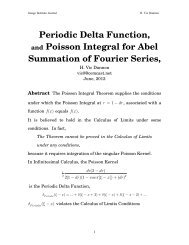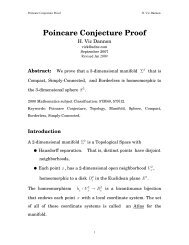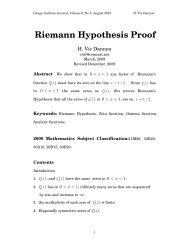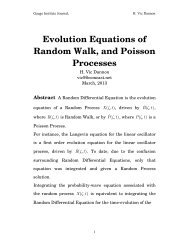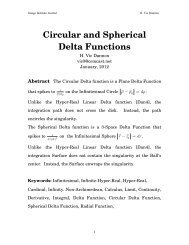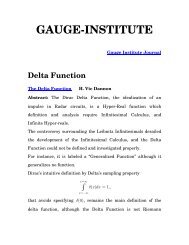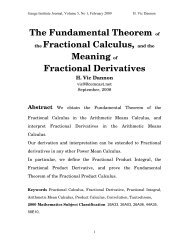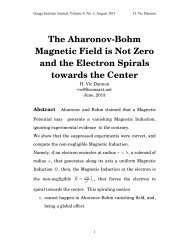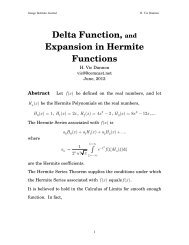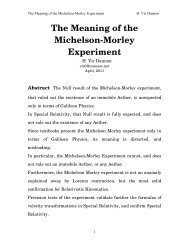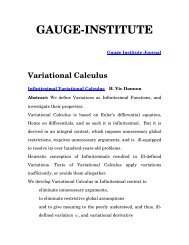Einstein's Diffusion and Probability-Wave Equations of Random ...
Einstein's Diffusion and Probability-Wave Equations of Random ...
Einstein's Diffusion and Probability-Wave Equations of Random ...
You also want an ePaper? Increase the reach of your titles
YUMPU automatically turns print PDFs into web optimized ePapers that Google loves.
Gauge Institute Journal,<br />
H. Vic Dannon<br />
Consequently, there are countably many real numbers in the<br />
interval<br />
[,] ab<br />
, <strong>and</strong> the Integration Sum has countably many<br />
terms.<br />
While we do not sequence the real numbers in the interval,<br />
the summation takes place over countably many f ( xdx. )<br />
The Lower Integral is the Integration Sum where f ( x ) is<br />
replaced<br />
by its lowest value on each interval<br />
3.2<br />
∑<br />
x∈[ a, b]<br />
⎛<br />
⎜⎝<br />
dx dx<br />
2 2<br />
[ x − , x + ]<br />
⎞<br />
inf f ( t)<br />
dx<br />
⎠⎟<br />
x− ≤t≤ x+<br />
dx dx<br />
2 2<br />
The Upper Integral is the Integration Sum where f ( x ) is<br />
replaced by its largest value on each interval<br />
3.3<br />
∑<br />
x∈[ a, b]<br />
⎛<br />
⎜⎝<br />
⎞ sup f ( t)<br />
dx<br />
⎠⎟<br />
dx dx<br />
2 2<br />
x− ≤t≤ x+<br />
[ x − , x + ]<br />
dx dx<br />
2 2<br />
If the integral is a finite hyper-real, we have<br />
14



